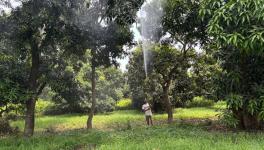Rivers Across Europe are Too Dry, Too Low And too Warm
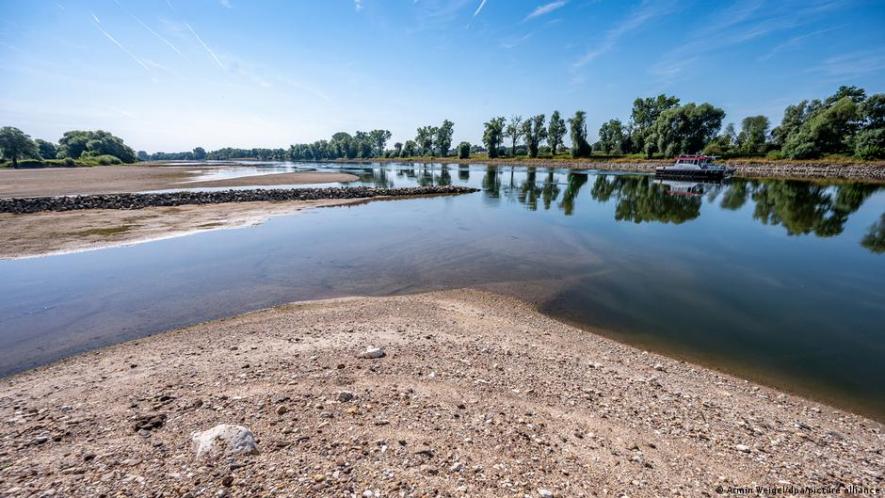
European rivers such as the Danube are dangerously low after months of drought
Europe's great rivers are important economic routes and ecosystems, as well as emblems of the cities through which they pass. Now, countries all across the continent are struggling once more with high temperatures and prolonged drought — and, as a result, the rivers are running low or are simply too hot.
The water level in the Rhine is extremely low. The average depth of the river at this time of year is usually about 2 meters (6.5 feet), but in some places it has fallen to less than 1 meter. In one narrow section of the river, near the German city of Koblenz, the water level at the start of August was only 56 centimeters (22 inches).
The Rhine is one of the busiest waterways in the world, but low levels mean severe restrictions for cargo ships. In order for them to pass through the narrow section near Koblenz fully laden, for example, the water has to be at least 1.5 meters deep. The shallow flow means they can only be loaded to a fraction of their capacity — and this pushes up the price of the goods they transport. If water levels don't rise soon, some ships won't be able to pass at all.
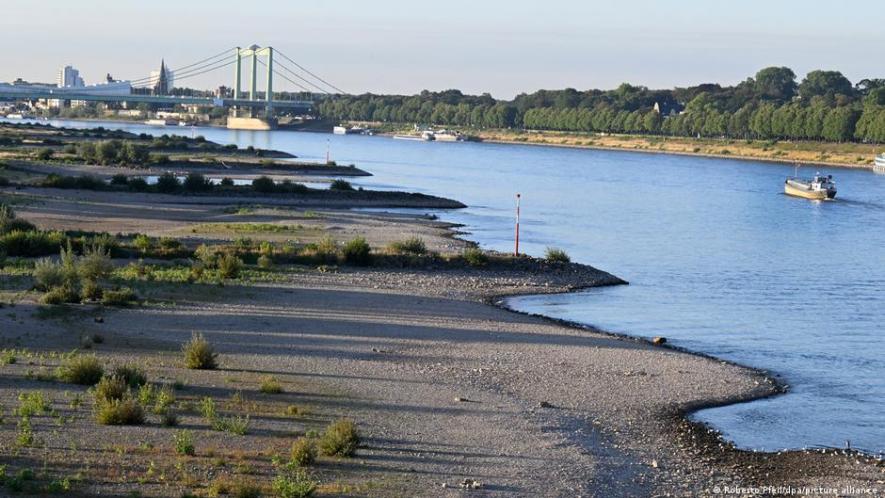
Ships have significantly reduced their loads near Cologne so as not to run aground.
WWII bomb resurfaces
When drought hits, remarkable things resurface from rivers and lakes: bones, fossils, even entire civilizations that sank beneath floodwaters thousands of years ago.
In late July, the receding water of the Po, Italy's longest river, exposed something far more dangerous when fishers near the city of Mantua found a 450-kilogram (1,000 pound) World War II bomb. It was only revealed because the northern Italian regions, including the Po Valley, are currently experiencing their worst drought in 70 years.
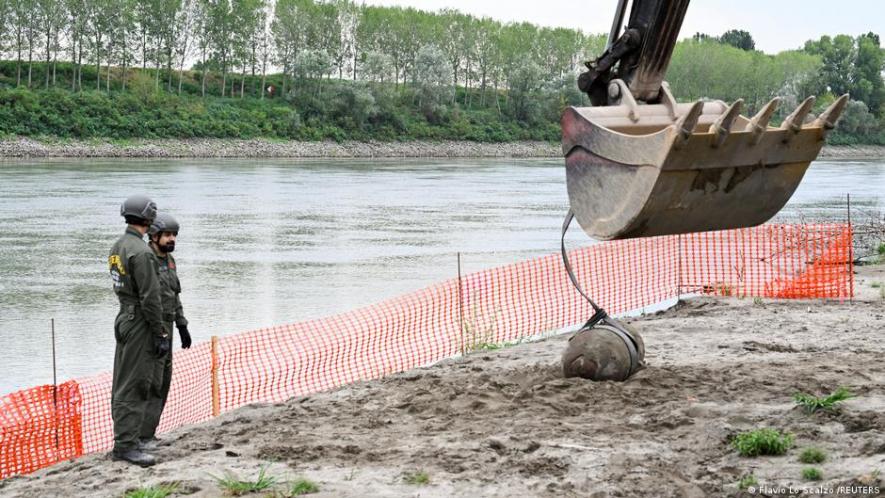
The receding waters of the Po River in Italy exposed a World War II bomb, which had to be destroyed
According to the Italian army, the unexploded bomb was defused, transferred to a safe site and detonated in a controlled explosion in early August. No one was hurt, but about 3,000 people had to leave their homes along the banks of the river during the operation.
Shifting Thames
The Thames is as much a part of London as Buckingham Palace or the Houses of Parliament, but it originates near the village of Kemble in southwest England. Or it did — until recently.
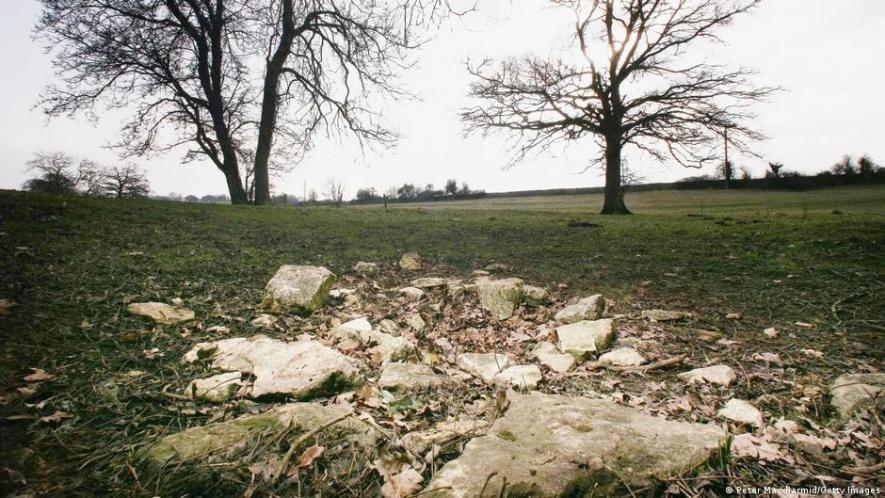
This was once the source of the Thames; the British river now surfaces 8 kilometers (around 5 miles) away
This picture shows the original source of the Thames in February 2006. That year, drought caused the source of the river to shift 1.5 kilometers (1 mile) to the southeast. This summer, conditions have gotten so bad that the Thames surfaces over 8 kilometers downstream from its official starting point.
Loire's nuclear responsibility
People associate the Loire with France's picturesque river landscapes and fairy-tale castles — but its banks are also home to the Belleville nuclear power plant.
This is no coincidence: Nuclear power plants are always situated near water because they need it for cooling. The Belleville plant discharges the water that it has used as coolant into the Loire, and refills its cooling towers with fresh water from the river.
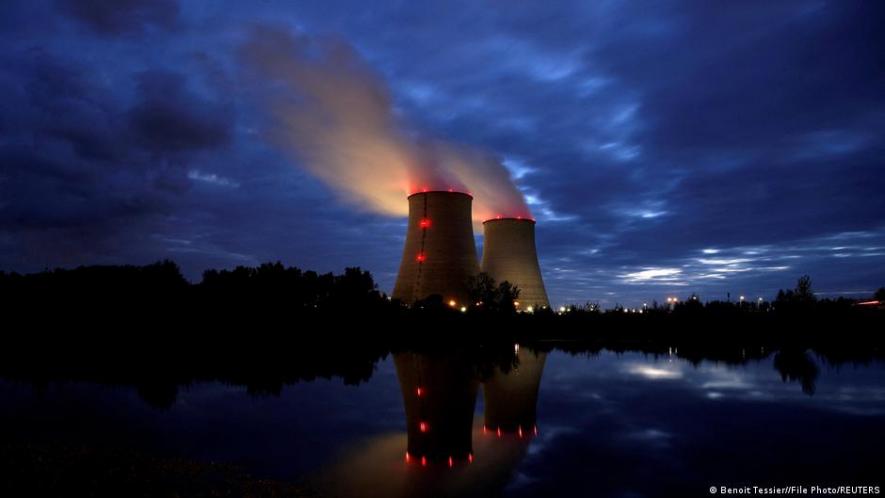
The Belleville nuclear power plant uses water from the Loire as a coolant
To protect the flora and fauna in and around the river, strict rules govern the degree to which power plants are allowed to raise the temperature of the river water. Once the maximum permitted temperature is reached, the nuclear power plants have to reduce their output — meaning they produce less electricity.
To top it off, this is occurring in a hot summer when the French are likely to have their fans and air conditioners on at full blast and Russia has stopped supplying France with gas via pipelines.
Danube's dipping oxygen
Water temperatures in the Danube are already dangerously high this summer — and water levels are low. In early August, the temperature of the river where it flows through the Upper Palatinate region of Bavaria was over 25 degrees Celsius (77 Fahrenheit) for seven days straight. The regional government there has warned that it can be expected to rise to over 26.5 degrees Celsius.
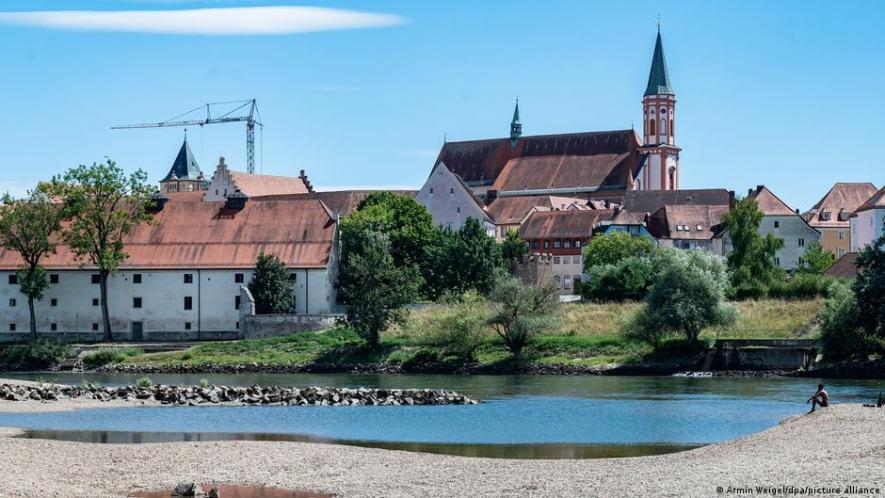
The water in the Danube — seen here near Straubing in Bavaria — isn't just very low, it's also too hot
The heat affects the oxygen content of the water, which could drop below six parts per million — a level that low would spell death for some fish in the Danube, including trout. Consequently, the district government has declared an alert level that allows it to ban dredging in the river and other measures that would worsen the ecological situation. It can also require wastewater treatment plants to suspend operations. This may be enough to save the trout.
This article was originally written in German.
Get the latest reports & analysis with people's perspective on Protests, movements & deep analytical videos, discussions of the current affairs in your Telegram app. Subscribe to NewsClick's Telegram channel & get Real-Time updates on stories, as they get published on our website.


















